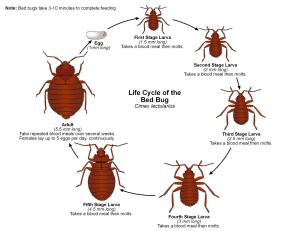Flying is not for the faint hearted. You arrive hours before your flight to endure the rigours of enhanced security checks, grappling with hand luggage restrictions on liquids and electronic equipment. Now, the last thing you need, as you cruise at 35,000 feet, is to be bitten by bed bugs. But, it happens and with increasing frequency.
Bed bugs love to live close to their next human meal. They are great at hitching a lift in our luggage and pretty accustomed to international travel so, it’s hardly surprising that they are frequently found in aircraft seating. Not that any airline would like to admit it, but it happens! What can be done to control them?
This was the subject that Adam Juson from Surrey-based Merlin Environmental addressed in his presentation at the 8th International Conference on Urban Pests (ICUP), held in Zurich from 21-23 July.
Adam explained how bed bug infestations on aircraft are a growing concern and how they can have a substantial financial impact on commercial airlines. In the worst case scenario infestations have led to aircraft being grounded – and that costs mega bucks! And, he predicted, that things will get worse, before they get better, largely because most airlines currently have a reactive approach to the problem.
Research by Merlin Environmental shows that airlines with a proactive approach to bed bug management, fare much better. They suffer 80% fewer seats infested and almost 70% fewer insects in the most heavily infested seats.
The research was conducted over three years and covered more than 100 inspections of infested aircraft. A wide range of carriers, aircraft models and seat configurations were covered. Cases ranged from single insects, in single seats, to infestation of many thousands of insects, spread through multiple cabins. Detection and eradication methods were assessed. Having found a problem proactively, or by waiting for a customer complaint, which treatment method offers the quickest and best result?
Story from the Mail Online: Jumbo Jet being grounded following passenger with bites.
To assess the efficacy of the available methods, a combination of scent detection dogs and human inspection was used to document the infestation levels prior to, and then 28 days after, treatment. The methods assessed were methyl bromide fumigation by a specialist aircraft company, chemical applications of the two products approved for use in aircraft, Ficam W and K-Othrine and two forms of heat treatment – a closed system and a forced air system.
The results show that methyl bromide fumigation was the only treatment which achieved 100% control.
Both chemical treatments produced disappointing results. This is probably because the complex nature of aircraft seating and restrictions on dismantling them prevented the technician properly applying the pesticide. The elevated tolerance profile of field strain bed bugs to these chemicals would not have helped.
In addition, the aggressive nature of the cabin environment degrades both pesticides exceptionally quickly, resulting in negligible residual value to chemical treatments. Even with further approval of pesticides for cabin use, it is unlikely that a pesticide-based approach will achieve the levels of control needed.
Heat treatment being an environmental manipulation technique has many supporters in the aviation industry. The levels of control achieved were the closest to methyl bromide fumigation, although still not 100% effective. If carried out correctly heat treatment has no deleterious effects on the aircraft, however close attention needs to be paid to temperature monitoring. In one closed system, treatment overheating of the environment resulted in warping of plastic components in seating products and cabin side walls. Forced air treatment in particular shows great potential.
In conclusion, Adam said: “Early detection is vital particularly in view of the reduced efficacy of eradication systems. There is also plenty of scope for improved seating designs to reduce rates of establishment and spread. Research into passenger boarding behaviour with a view to reducing inoculation rates would also be helpful.
“With big differences in the approach between different airlines, some central resource which allows the aviation industry to share best practice would also be beneficial.”













